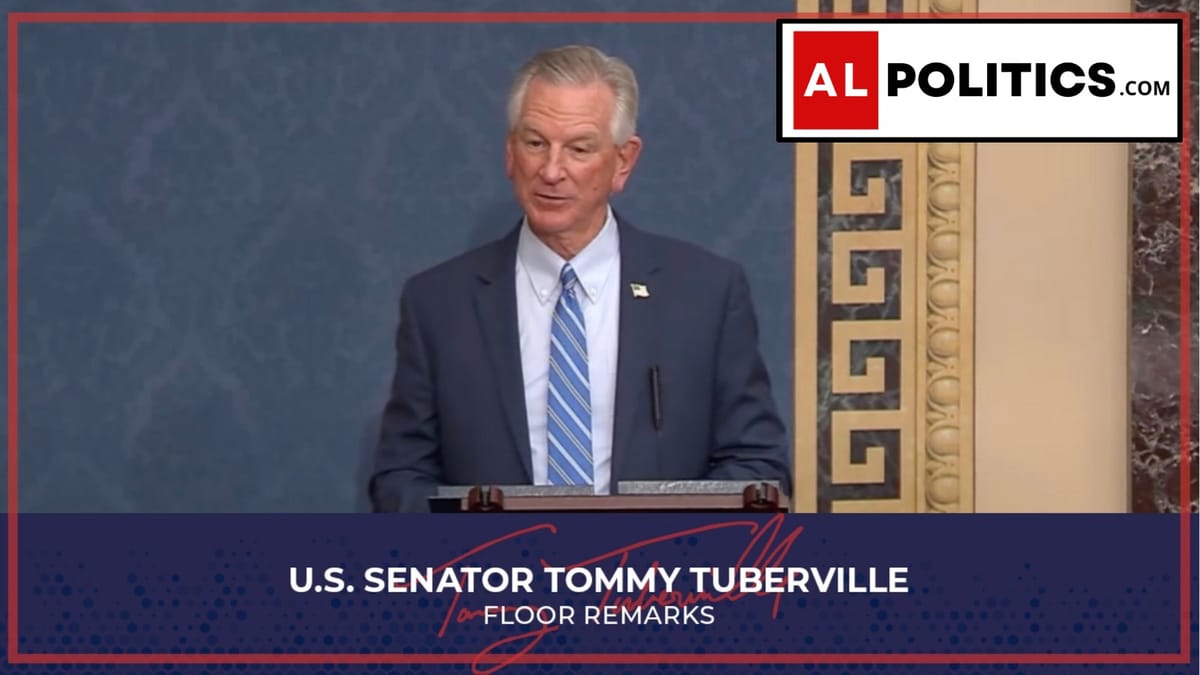The Case Against the Time Change—and Tuberville’s Push to Stop It
Changing our clocks twice a year is harmful, but staying on standard time is likely a better solution than permanent Daylight Savings Time

Americans have just had to “fall back” again on the first Sunday in November—even though turning the clocks ahead and behind twice a year is not just annoying, it’s harmful.
U.S. Senator Tommy Tuberville (R-AL) is once again leading one of the loudest efforts in Congress to abolish the change and make Daylight Saving Time (DST) permanent. But, the solution is not so simple, and not just because the health, psychological, and economic costs of shifting the clocks likely outweigh the benefits.
On October 29, 2025, Sen. Tuberville took to the Senate floor to press for the Sunshine Protection Act, a bill that would end the biannual clock change and lock the country into DST year-round.
He noted that “in the five years I have served here in the Senate, making Daylight Saving Time permanent is the number one issue that I hear about back home.” He reminded colleagues that Americans will soon be forced to change clocks again, and that under the current system, “it will be dark in Washington, D.C. at 5PM next week.”
Tuberville and Sen. Rick Scott first reintroduced the Sunshine Protection Act in January 2025, calling to “lock the clock” and eliminate the twice-yearly adjustment. He has framed his campaign as one of health, safety, and economic benefit—arguing repeatedly that switching clocks disrupts sleep, raises health risks, and reduces productivity.
Once again, the push to end DST has stalled. While the Senate has brought up the measure, it has yet to pass both chambers and become law.
The practice of shifting clocks twice a year—“spring forward, fall back”—is tied up with tradition and convenience. But in recent years, the weight of evidence is tipping toward the conclusion that the change is harmful, not helpful.
A growing body of research suggests that Tuberville is correct in that the time change itself is bad for public health. A Stanford Medicine analysis released in 2025 found that permanent standard time, not daylight saving time, would likely prevent more than 300,000 strokes each year and reduce obesity cases by 2.6 million. The study compared three scenarios—the current shifting system, permanent daylight time, and permanent standard time—and concluded that the biannual change carries the highest health costs. Scientists call it a “circadian burden,” meaning that shifting the clock throws off the body’s internal rhythm. That mismatch can trigger sleep loss, cardiovascular stress, metabolic problems (including obesity), and even long-term immune and psychological effects.
The evidence is not limited to laboratory models. Public data shows that the spring transition, when Americans lose an hour of sleep, corresponds to a six percent rise in fatal car crashes and up to a twenty-four percent spike in heart attacks during the following week. Doctors also see higher rates of workplace injuries, mood changes, and anxiety-related complaints after the shift. Over time, those disruptions can add up, contributing to chronic disease and fatigue. Sleep scientists say that, biologically, humans are meant to wake with the sun, and repeated interference with that pattern can lead to lasting harm.
The time change has mental and behavioral consequences as well. Shorter daylight hours in the fall are tied to seasonal depression and lower cognitive performance. In the spring, many people struggle with irritability and concentration problems as their bodies adjust. Fatigue also plays a role in higher accident rates and lower alertness on the job. Even public safety sees ripple effects. Some studies suggest that crime rates fall under daylight saving time—Tuberville cites data showing robbery down 27 percent, murder down 48 percent, and rape down 56 percent—but others note that dark winter mornings could simply shift those risks to earlier hours.
Economists say the practice takes a toll, too. Sleep loss and lower productivity linked to the time change cost U.S. businesses more than $150 billion a year, according to Forbes. That includes lost work hours, healthcare costs, and on-the-job errors. The PBS NewsHour reported similar findings, pointing to measurable dips in efficiency and higher accident rates immediately after the clock shift. While evening daylight can boost retail and leisure activity, those gains are offset by safety risks and energy demands in the darker morning hours. Farmers, school transportation systems, and early-shift workers all report problems tied to the semiannual changes.
But while Tuberville’s solution—making DST permanent—has gained attention, most sleep researchers and medical associations argue that permanent standard time would be healthier. Organizations including the American Academy of Sleep Medicine, the American Medical Association, and the National Sleep Foundation all favor standard time because it aligns best with natural sunlight and the body’s internal clock. Morning light, they note, helps regulate sleep and alertness, while bright evening light under permanent DST could prolong insomnia and fatigue. For those living on the eastern edges of their time zones, permanent daylight time could mean winter sunrises as late as 8:30 a.m., forcing children and commuters to begin their days in darkness.
Public opinion is also divided. Surveys show that most Americans want to stop switching clocks—in one recent study, 75% favored ending the twice-a-year change—but many disagree over which schedule should be permanent. The Senate unanimously passed a version of the Sunshine Protection Act in 2022, but the House never took it up, and the effort died for that session. Still, frustration has grown, and both voters and scientists now agree that something needs to change.
Tuberville continues to frame his campaign as a matter of common sense and health. “Changing our clocks twice a year makes no sense,” he said. Supporters point to higher energy use, disrupted schedules, and stress as reasons to end the shift. Yet, according to recent studies, the real public health benefits may lie not in staying on daylight saving time, but in returning to the simpler, more natural rhythm of permanent standard time.
For now, the debate remains unsettled. Congress must decide whether to stop the clock changes altogether or keep things as they are. Until then, Americans will continue to reset their clocks twice a year, brace for the inevitable problems, and wonder just what it will take for their chronically dysfunctional Congress to pass something so obviously beneficial for, and desired by, so many.
Senator Tuberville’s remarks are available for viewing on Rumble, on YouTube or below:




